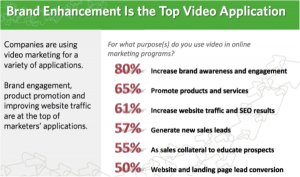We open on a scene of a crowded co-working space at a company whose assets aren’t much more than a card table, folding chairs and lots of white earbuds. A young person with no experience building a brand pecks at a laptop, hunting for the secret internet button — the one that only people wearing hoodiescan see. With a few clever tricks, he will hack the gates of the canal that controls internet traffic and in a matter of days shift the flow of customers from you to them.
That’s the popular image of growth hacking, right? Scrappy startups rocketing from a few thousand users to a million to become market leaders. With a tweak in referral incentives or the customer experience, David not only beats Goliath but becomes Goliath.
So much of the conversation about growth hacking is about new companies trying to break through that almost any article on the subject mentions well-known cases like these:
- Airbnb enabling an automatic cross post to Craigslist (which Craigslist later blocked), helping to spread word of the service very quickly.
- Hotmail embedding a call-to-action in the bottom of every message, so that users were effectively advertising to everyone they sent an email to.
- Dropbox’s legendary incentivized referral program. Get more free space simply by inviting others, which made each user stickier.
Most of the growth hacking tactics you hear about are by startups that invent them out of necessity because they don’t have resources for marketing. This can make it seem like the ethos of growth hacking is inherently to “get big fast.”
But what if you’re already big? These tricks can feel irrelevant or even risky for established brands that have a loyal following with millions of customers, where making a huge change could potentially backfire and leave customers confused and upset.
I empathize with this hesitation. Big brands usually have decades of tradition behind them and an enormous reservoir of goodwill. They need to act like grownups. I would be nervous too about strategies that share the same label we use for mischievous kids creating mayhem on computers in their basements.
However, grownup brands can’t leave the growth hacking strategy to startups. It’s inevitable that companies hit plateaus, and in the worst-case scenario, incumbents stagnate and find themselves overtaken by new products. Big brands are constantly challenged to find new growth from somewhere.
And I’m here to tell you that it is possible to use growth hacking strategies conservatively and carefully in ways that reveal new opportunities for big brands.
Embrace failure
First the hard part: growth hacking requires a little bit of an attitude adjustment that embraces the inevitability of failure. For every success story you hear about in growth hacking, there are a dozen more untold stories about what didn’t work.
The heart of growth hacking is experimenting, testing (failing that test more often than not) and then iterating. You may also notice that almost all the examples of growth hacking are on digital platforms. One obvious lesson there is that digital can be scaled for growth.
But an overlooked lesson is that digital is measurable, which allows you to scale the learning and iteration. The beauty of growth hacking done properly is that the change can be implemented quickly. You can “up your failure rate,” to paraphrase Thomas Watson, the CEO who built IBM into Big Blue, the ultimate grownup company.
The beauty of being a big company is that you have a very large user base to experiment with. Of course, it would be completely foolish to make a major change to the user experience for millions of people. But with a large user base, you can carve out a small percentage that still makes a useful data set. Using platforms like Optimizely, Bounce Exchange or Qualaroo, you can implement fast tests and garner user feedback that provides valuable data and unlocks opportunities for growth.
Consider Amazon, for example. They use many of the same traditional marketing tactics as other companies, including splashy advertising campaigns in print and broadcasting. But a lot of their growth can be attributed to the hundreds of experiments they run every day on tiny sample sets. Every “buy now” button, pre-order tease, subscription offer and recommendation banner on Amazon is an experiment to find out how to capture more value from its existing customer base and to build new markets.
Get bigger slowly by testing the small stuff
Now the less scary part: You can benefit from growth hacking by using less risky “small ball” strategies.
The problem is many large companies view growth hacking with an all-or-nothing attitude, assuming they have to duplicate what Hotmail and Dropbox did. It’s like they’re looking for a home run the first time at the plate.
But growth hacking lends itself well to incremental approaches. Think of it as the “beat ‘em with singles” strategy in baseball. Instead of trying to be marketing’s version of Barry Bonds, businesses can take small swings that accumulate results over time.
Looking at Amazon again, they don’t just run lots of experiments, they run experiments to test very small changes. Each of those prompts, call-to-action buttons and product offerings is an incremental change. You hear about the big wins like Amazon Prime, but most of the time, a big innovation like that is the result of many small hacks.
Where to find hacks you can try
The short answer is “everywhere.” The essence of growth hacking is understanding where and how your customers communicate and tapping into that. That’s why so many growth hack opportunities emerge on social media platforms.
One recent example is a marketing hack for the upcoming movie Ex Machina, which is about intelligent robots that seem close enough to real that the human characters have confused feelings for them. A publicity campaign used an account on Tindr to engage users in slightly flirtatious, but slightly robotic, chats before revealing a promotional website. As an Adweek essay points out, time will tell if this hack was a hit or a swing-and-a-miss. But the point is that if you are using platforms like Twitter and Snapchat merely as billboards, you’re not realizing their full potential. Digital marketing should be a way to engage with your customers.
Selfie contests are an example of hacking the intended use of a platform to engage with customers. Another great engagement example recently is how many fashion brands are getting around a limitation on Instagram, which doesn’t allow them to place links in image descriptions. Followers are not able to click a link to learn more about a product you’ve posted a photo of.
To get around this, smaller brands and boutiques started telling followers to comment on photos with their email address so the business could send them more information. You might think any normal person wouldn’t want their email address in a public comment thread. But right now there are literally thousands of people doing just that on Instagram.
These brands wanted to find a different way to create value for their customers and themselves by using a platform in a different way. And in so doing, they were able to now generate growth toward their business. This is about being relevant and where your consumer is. If you are timely and relevant, you have an opportunity to be authentic.
Don’t rush it
I get it. Being an established brand comes with a responsibility to move cautiously. Meanwhile the digital marketing environment is moving around you very quickly.
But you can grab some of the opportunity in growth hacking strategies if you think of it as smarter, test-driven marketing, combined with great awareness of where and how your customer communicates.
Get started by keeping these principles in mind: Think like a scientist, form a hypothesis and test. Say to yourself, “I believe that X. To validate this we will Y. We’ll measure Z. And we are right if A happens.”
For example:
I believe that changing my call to action language on my product trial landing page will drive higher conversion rates. To validate this we will try three different variants on the copy using Optimizely and Google Analytics Goal Conversions. We’ll measure sign-up rate & click-through rate on the button. We are right if we see an increase in the conversion rate.
- Test and iterate.
- Fail often, but fail forward. (Learn from it).
- Make many small changes.
- Use social media to listen and engage.
The important thing to remember is that growth via growth hacking tactics does not have to happen all at once. In a few extraordinary cases, brands have broken through with a mad dash. But for most of us, growth is a marathon, not a sprint.
(225)








